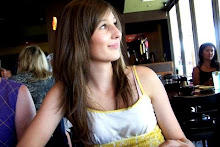Because our Junk Trip fell through we decided to go to some walled cities and temples. After, missing the exit we drove around for about an hour because there is no place on the highways to really turn around and go back. The first one we went to, and my personal favorite, was Ping Shan. Later was to Kan Tin. Because there were so many pirates back in the day they would build these walls around the cities to protect themselves. They would have lookout towers and everything they needed was inside the walls. All of the streets are very narrow and so that if attacked they could shoot at invaders from above windows or pour hot oil on them. Ping Shan was one of the “Five Great Clans” in the New Territories have been here since the twelfth century. The first village had much less tourism then the second; you could tell it was just a place that people lived their lives.
We went to lunch at this very local place, the most local place any of use have ever been to. We prayed that our dishes would be what we ordered. It was a little hectic with the language barrier and all the noise in the restaurant. All the dishes were huge and about three dollars U.S. I got chicken, vegetables, and rice. All I ate was some rice because the chicken had skin and bones in each piece and it really grossed me out. We went to the Old Ping Shan Police Station that is now the Ping Shan Tang Clan Gallery and Heritage Trails Visitors Center. On the walk up there was a funeral happening and the people were burning paper money, suits, and sports cars for the deceased to use in heaven. The station was made in 1899 and is one of the few remaining pre-war police stations in the New Territories. It was replaced by the Yuen Long Station in the 1960’s and was used as the training center and headquarters of the Police Dog Unit. The museum had a main gallery and outside of it were long buildings with little rooms, each with a different display. They were probably cells, and then later on dog kennels.
Once we looked through the museum we went to Hung Shing Temple. Built in 1767 during the Qing Dynasty, it has two hall buildings with a courtyard in between. They are so beautiful and well preserved. My favorite thing to see was the study halls. It was just magnificent, the detail of these things and the sheer beauty of them. They stand out surrounded by tiny little dirty houses and huge buildings. The Ting Study Hall in Hang Mei Tsuen was built in the 1870’s for both studying and worship. Many study halls were built in this area to prepare kids for the Imperial Service Examinations to improve the social status of the Tang Clan.
My absolute favorite though is Ching Shu Hin. It is the guest house for the visitors and scholars of the study hall. It looks to me kind of like a little castle. The guest quarters have carved panels, murals, patterned grilles, and carved brackets and plaster moldings. I am not describing it very well, but it is truly amazing. Thankfully Frank is a photographer and took some photos of the buildings also, so I can steel them. Mine don’t really capture how amazing it was. After we looked at all of that we went to the Tsui Sing Lau Pagoda.
Once we looked there Frank wanted to take a quick look at Kan Tin. There were old ladies everywhere in traditional clothes asking for money in exchange for pictures of them. This one had many tourists looking through it so it wasn’t as fun. The old ladies even charged you to go in, not that it was very expensive but still. When we went inside the lady in front of us was going to take a picture of these old ladies playing cards and the ladies yelled at her. It was so funny but kind of put me off to city. The wall was more interesting here in Kan Tin. There were watch towers in each corner, and some were crumbling while others still stood. The streets were much narrower in this one too and the city seemed a little bigger.
Subscribe to:
Post Comments (Atom)

No comments:
Post a Comment